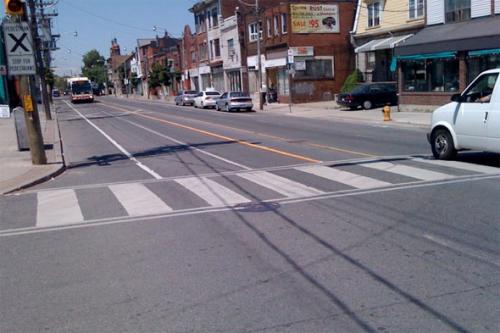 cnOn The Path
cnOn The Path
17 years ago ago by LexnGer.
(Photo: flickr user lexenger)
The pilot period for e-bikes is nearing its end in Ontario. The province has luckily decided to allow e-bikes on our roads. If they get people out of much larger, polluting automobiles we all win.
E-bikes, however, have been clouded in controversy. Much of the controversy between cyclists and e-bikers has been about where the province and city should allow e-bikes: namely, should e-bikes be allowed everywhere bikes are allowed?
I believe I have an insight: the key problem is not so much e-bikes in and of themselves, but our infrastructure and education for cycling. Both are inadequate for the needs of cyclists let alone e-bikers. There is little chance of conflict with e-bikes in bike lanes, but on multi-use paths both cyclists and e-bikers need to drastically limit their speed and manoeuvre around mobs of pedestrians and dogs. Conflicts on the road and paths can be reduced with at least a minimum level of training in effective, safe and courteous cycling. Then it would matter much less if you happen to be pedalling or propelling yourself with an electric motor. The government, in its infinite wisdom, has decided that not only is it okay that cyclists get no commuter cycling training before they graduate from high school but that e-bikers don't as well.
The bike union recently held a survey on the larger e-bikes, and even though a majority of the participants felt that they were indeed motor vehicles and not bicycles, when asked if they felt they should be allowed in bike lanes the results were more evenly split. The answers swung strongly back to "no" when the participants were asked if they should be allowed on multi-use paths.
This is quite revealing. Cyclists have much less of a problem with e-bikers in bike lanes than on multi-use paths. There is one main difference: pedestrians. Multi-use paths, particularly in Toronto, are often packed full of slow-moving, meandering children, dogs on leashes, seniors looking at plants, gaggles of teens or adults. They are often not particularly good thoroughfares for cyclists, let alone e-bikers.
So instead of deciding if e-bikes should be allowed on multi-use paths as cyclists are, we need better paths with no pedestrians around, which works much better for e-bikers and cyclists. The worry for both is that they're more likely to run into a pedestrian rather than get into conflict with each other.
The same goes for education. Many cyclists worry about e-bikers overtaking them by riding too close and without warning or noise. But then, many seasoned cyclists also worry about other cyclists doing the same. E-bikes have interested new people, people who are not familiar with the obligations of cyclists. Most people get the majority of their cycling education from their parents or police rodeos where they are often taught the very basics: stop at intersections, wear a helmet. Not many will willingly fork over $60+ to take a CAN-BIKE course. E-bikers are at an even bigger disadvantage since there are no e-bike specific courses out there, as far as I know.
It may comfort a lot of cyclists that a lot of thought went into the original 2001 drafting of the federal Motor Vehicle Safety Regulations on power-assist bicycles. It was not arbitrary. In their current form they allow both the pedal-assist and the moped-looking e-bikes with throttles. They were well aware that these larger bikes would not, for the most part, be pedaled. They considered that there was little difference in safety between pedal-assist and throttle-controls. But the speed of both was limited to simulate the average top speed of cycilsts. And since the power output is limited to 500 Watts this also effectively limits the weight of the machine, since a heavier machine would require more power to get going.
Should e-bikes be allowed on our multi-use paths, given their current configuration? I'm still hesitant. The province and city should think hard about that in the context of a large need for a comprehensive bike network and cycling commuter training that starts in our schools.



